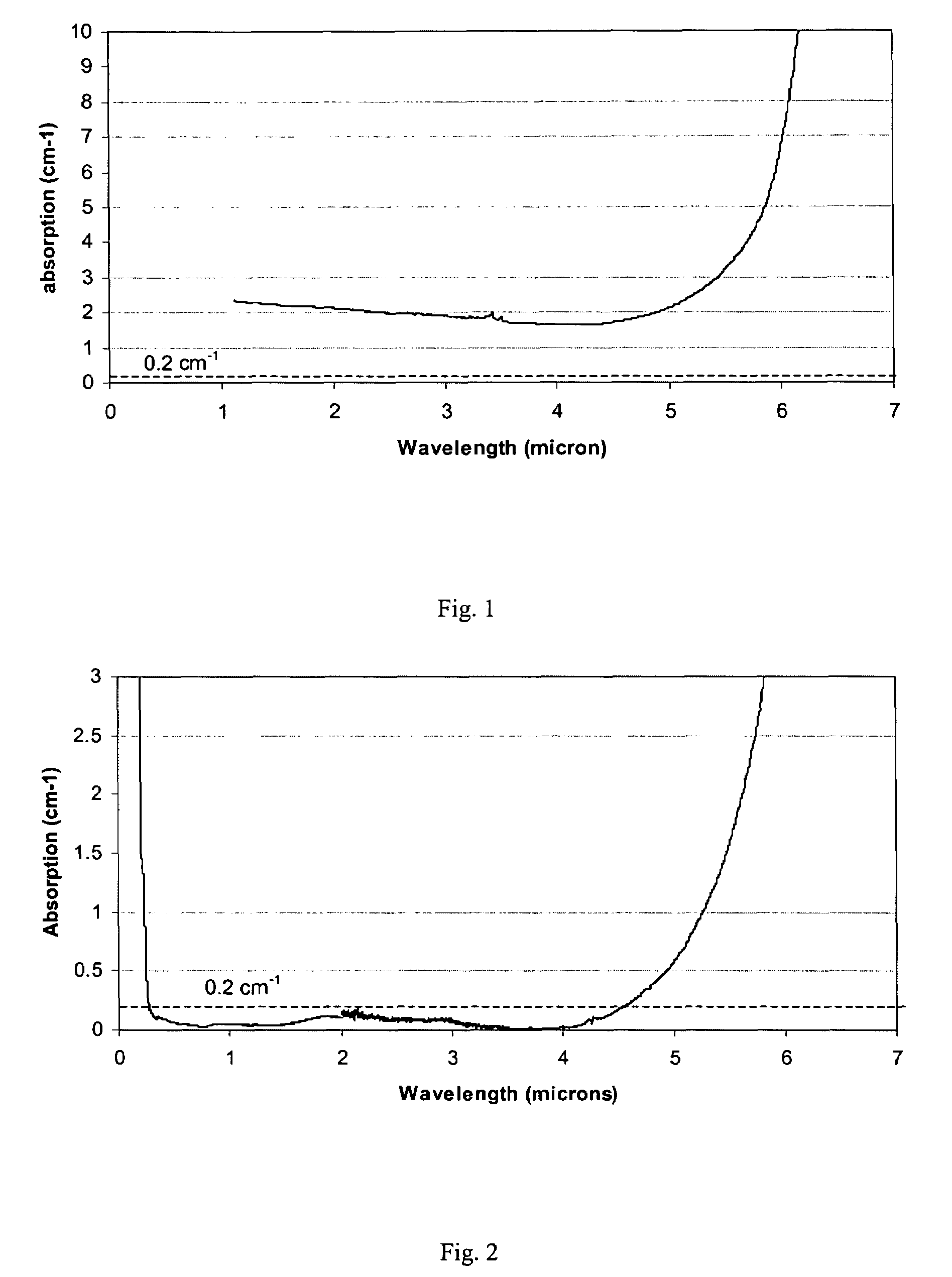Fluoride salt coated magnesium aluminate
a technology of fluoride salt and magnesium aluminate, which is applied in the field of fluoride saltcoated magnesium aluminate particles, can solve the problems of high scattering and absorption losses, poor yield, and article posing uniform optical losses, and achieve the effect of avoiding spalling
- Summary
- Abstract
- Description
- Claims
- Application Information
AI Technical Summary
Benefits of technology
Problems solved by technology
Method used
Image
Examples
example 2
[0032]LiF-coated spinel particle—LiF was dissolved in water (0.036 g LiF in 400 mL DI water) to make the stock solution. 116 mL of the stock solution was further diluted with 600 mL ethyl alcohol and then mixed with 15 g of spinel particles, and ultra-sonically sprayed. The column was 60 inches tall. The bottom of the ultrasonic spray head was about 6 inches from the top of the column. A 12 inch tall heater was wrapped around the column, centered at 27 inches from the top of the column. A second such heater was centered 47 inches from the top of the column. The heaters were set at 415° C. at the top heater and 430° C. at the bottom heater. Inside the column the temperatures were approximately about 30° C. at the bottom of the ultrasonic spray head, 150° C. at the center of the top heater and 270° C. at the center of the bottom heater, respectively. The LiF was prevented from coming out of solution until it was falling through the spray-drying column. As the solvents evaporated while...
example 3
[0033]Pressing into a transparent shape—The coated powder from Example 2 was placed in a Grafoil®-lined graphite hot press die. The die was placed in an argon / vacuum atmosphere hot press. Minimal pressure was applied until the powder started to densify at approximately 1100° C. and was then stepped up to or above 3000 psi when a temperature at or above 1450° C. was attained. The heating schedule was a 20° C. / min ramp to 950° C., a 30 minute hold to allow the LiF to melt and clean / etch the particle surfaces, a 20° C. / min ramp to 1200° C., a 30 min hold to allow the now vaporized LiF to leave the hot press die, a 20° C. / min ramp to 1650° C., and a 2 hour hold to fully densify the powder into a transparent shape. The heating elements were turned off to allow natural cooling of the hot press and the hydraulic motor was turned off to allow the pressure to bleed off. The use of the LiF coating allowed the hot pressing of the spinel particles in an inert atmosphere into a shape that is abo...
example 4
[0034]Solid ceramic—This example shows the process for making spinel using the LiF coated spinel particles and heat treating them in air prior to densification at 600° C. for 12–18 hours. Hot pressing schedule is the same as in Example 3. Impurity concentrations of carbon, silicon, and transition metal ions were below 50, 300, 50 ppm, respectively, over the entire sample without any specific regions exceeding these values. Loss plot (FIG. 2) shows loss of 95% of the total surface area).
PUM
| Property | Measurement | Unit |
|---|---|---|
| temperature | aaaaa | aaaaa |
| diameter | aaaaa | aaaaa |
| thickness | aaaaa | aaaaa |
Abstract
Description
Claims
Application Information
 Login to View More
Login to View More - R&D
- Intellectual Property
- Life Sciences
- Materials
- Tech Scout
- Unparalleled Data Quality
- Higher Quality Content
- 60% Fewer Hallucinations
Browse by: Latest US Patents, China's latest patents, Technical Efficacy Thesaurus, Application Domain, Technology Topic, Popular Technical Reports.
© 2025 PatSnap. All rights reserved.Legal|Privacy policy|Modern Slavery Act Transparency Statement|Sitemap|About US| Contact US: help@patsnap.com

